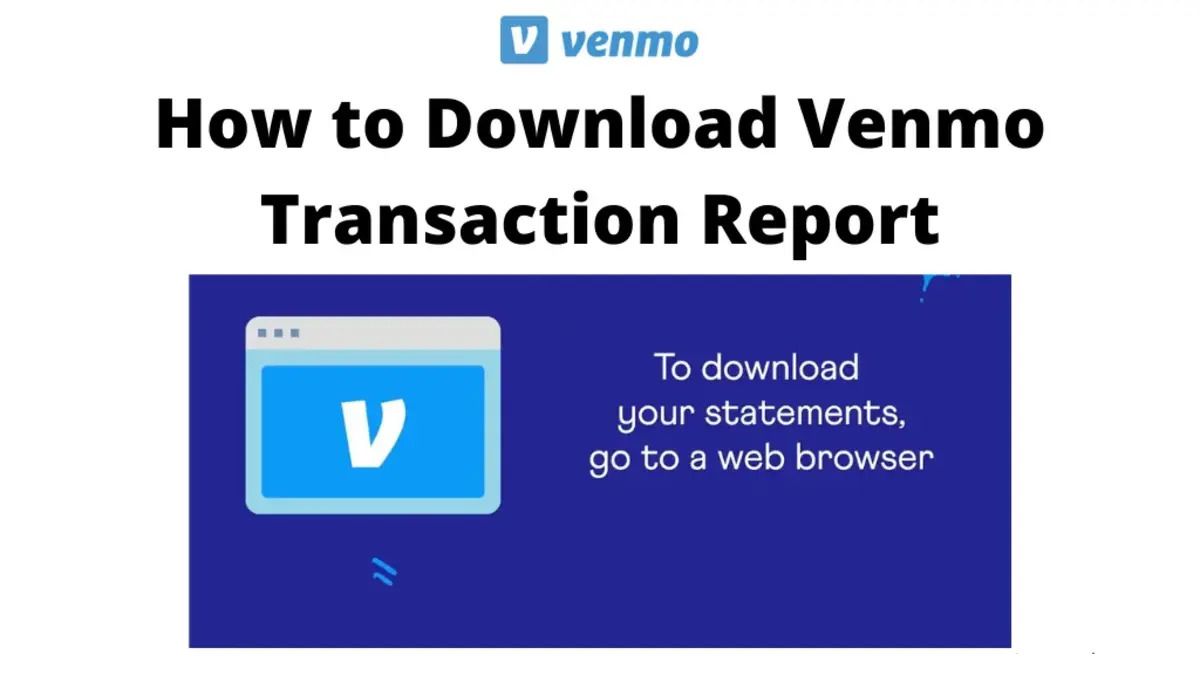Introduction
Welcome to the fascinating world of banking, where transactions are meticulously recorded and monitored to ensure accuracy. In this world, a credit memo plays a crucial role in maintaining financial integrity and providing a seamless experience for customers.
A credit memo, also known as a credit note, is a document issued by a bank to acknowledge an increase or addition to a customer’s account balance. It serves as a record of a positive adjustment made by the bank, typically resulting from an error correction, refund, or any other credit-related transaction. By providing a clear and concise documentation of the transaction, a credit memo helps in establishing transparency and trust between the bank and its customers.
Understanding the purpose and mechanics of a credit memo is essential for both banking professionals and account holders. It enables banks to maintain accurate records and ensures that customers have a comprehensive overview of their financial activities. In this article, we will delve deeper into the definition, purpose, format, and significance of credit memos in the banking industry.
So, whether you are a banking professional looking to enhance your knowledge or a curious customer seeking clarity, read on to explore the world of credit memos and how they contribute to the smooth functioning of the banking system.
Definition of a Credit Memo
A credit memo is a formal document issued by a bank to acknowledge and record an increase or addition to a customer’s account balance. It serves as a means of communication between the bank and the account holder, providing a clear and documented explanation of the credit transaction and its impact on the account balance.
When a bank issues a credit memo, it indicates that the customer’s account has been credited with additional funds. This can occur in various scenarios, including error corrections, refunds, rewards or loyalty program credits, and other credit-related transactions. The credit memo includes relevant details such as the transaction date, amount credited, the purpose of the credit, and any accompanying notes or explanations.
A credit memo acts as an official acknowledgement and confirmation from the bank that the specified amount has been added to the customer’s account. It serves as a legal document, providing supporting evidence in case of any discrepancies or disputes regarding the account balance in the future. The credit memo is an important tool for both the bank and the account holder to ensure accuracy and transparency in financial transactions.
It is worth noting that a credit memo is different from a debit memo, which is a document that reflects a deduction or reduction in the customer’s account balance.
Now that we have defined what a credit memo is, let us delve further into the purpose and significance of this document in the banking industry.
Purpose of a Credit Memo
The primary purpose of a credit memo in banking is to provide a clear and documented record of a positive adjustment made to a customer’s account balance. It serves as a means of communication between the bank and the account holder, ensuring transparency and accuracy in financial transactions. Let’s explore the key purposes of a credit memo:
1. Error Correction: One of the common reasons for issuing a credit memo is to rectify any discrepancies or errors in the customer’s account. These errors can occur due to various factors such as incorrect deposit entries, erroneous charges, or accidental overpayments. By issuing a credit memo, the bank acknowledges and rectifies the error, ensuring that the customer’s account reflects the correct and updated balance.
2. Refunds: In the event of a customer returning a purchased item or canceling a service, a credit memo is issued to refund or credit the corresponding amount back to the customer’s account. This ensures that the customer receives the appropriate reimbursement for their returned or canceled transaction, creating a seamless and customer-centric experience.
3. Rewards or Loyalty Programs: Many banks offer rewards or loyalty programs to incentivize customers for their continued patronage. When customers earn rewards points or loyalty credits, the bank issues a credit memo to reflect the accumulation or addition of these credits to their account. This serves as a way to acknowledge and appreciate customer loyalty, encouraging them to engage further with the bank’s offerings.
4. Other Credit-Related Transactions: Credit memos may also be issued for various other credit-related transactions, such as interest income, dividends, or cashback rewards. These credits can result from investments, savings accounts, or other financial products offered by the bank. The credit memo provides a documented record of these transactions, ensuring transparency and accountability.
Overall, the purpose of a credit memo is to maintain accurate financial records, rectify errors, provide refunds, acknowledge customer loyalty, and document various credit-related transactions. By fulfilling these purposes, credit memos contribute to building trust and confidence between the bank and its customers.
Parties Involved in a Credit Memo
A credit memo involves different parties who play distinct roles in the issuance and processing of this document. Understanding the responsibilities of each party is essential for a smooth and efficient credit memo process. Let’s explore the key parties involved:
1. Bank: The bank, which can be a commercial bank, credit union, or any financial institution, is the main entity responsible for issuing and managing credit memos. It initiates the process by identifying the need for a credit memo, verifying the transaction, and preparing the necessary documentation. The bank ensures that the credit memo accurately reflects the nature and impact of the credit-related transaction on the customer’s account.
2. Account Holder: The account holder, also known as the customer, is the recipient of the credit memo. They are the individual or business entity that holds an account with the bank. The account holder may have initiated the credit transaction, such as returning an item for a refund or participating in a loyalty program. They rely on the credit memo to keep track of their account balance and verify the addition of funds. The account holder should review the credit memo for accuracy and report any discrepancies to the bank if necessary.
3. Customer Service Representatives: Customer service representatives, employed by the bank, play a crucial role in assisting account holders with their credit memo queries and concerns. They are responsible for providing information and guidance regarding the credit memo process. If an account holder has any questions about the credit memo or requires clarification, they can reach out to customer service representatives for assistance.
4. Accounting Department: The bank’s accounting department is involved in the processing and recording of credit memos. They ensure that the credit memo is accurately documented and reflected in the account holder’s financial records. The accounting department is responsible for maintaining accurate financial statements and ensuring compliance with regulatory standards.
5. Other Third-Party Entities: Depending on the specific transaction, there may be additional third-party entities involved in the credit memo process. For example, if the credit memo is issued for a refund, a merchant or vendor may be involved in providing the necessary refund details to the bank. These external entities contribute to the accuracy and completion of the credit memo process.
By having a clear understanding of the parties involved, their roles, and their responsibilities, the credit memo process can be carried out efficiently, ensuring accurate documentation and a seamless experience for account holders.
Format and Content of a Credit Memo
A credit memo follows a specific format and includes essential content to provide a comprehensive record of the credit-related transaction. Let’s explore the typical format and content of a credit memo:
1. Header: The credit memo begins with a header section that includes the relevant details such as the bank’s name, address, contact information, and logo. This helps to identify the issuing bank and create a professional presentation of the document.
2. Memo Number: Each credit memo is assigned a unique identification number. This memo number serves as a reference for tracking and organizing purposes within the bank’s systems. It facilitates easy retrieval of the credit memo when needed in the future.
3. Date: The credit memo includes the date it was issued. This helps both the bank and the account holder to easily identify the time the credit-related transaction was processed.
4. Account Holder Information: The credit memo contains the account holder’s information, such as their name, account number, and contact details. This ensures that the credit memo is clearly associated with the correct account and avoids any confusion or misplacement of the document.
5. Transaction Details: The heart of the credit memo lies in the transaction details. It includes information about the transaction, such as the reason for the credit, the amount credited, and any accompanying notes or explanations. This section provides a clear and concise account of the credit-related activity.
6. Supporting Documents: In some cases, the credit memo may include supporting documents, such as receipts, invoices, or other evidence that validate the credit-related transaction. These documents serve as proof for the validity and accuracy of the credit memo.
7. Terms and Conditions: The credit memo may contain relevant terms and conditions that govern the credit-related transaction. This can include information regarding refund policies, eligibility criteria for loyalty program credits, or any other conditions associated with the credit memo.
8. Bank Representative: The credit memo is typically signed or authorized by a representative of the bank. This adds an additional level of authenticity and accountability to the document, ensuring that it is recognized as an official communication from the bank.
The format and content of a credit memo may vary slightly depending on the specific requirements and practices of the issuing bank. However, the main objective is to provide a comprehensive record of the credit-related transaction, ensuring transparency, accuracy, and accountability.
Common Scenarios for Issuing Credit Memos
Credit memos are issued in various scenarios within the banking industry. These scenarios involve specific credit-related transactions that necessitate the issuance of a credit memo. Let’s explore some of the common scenarios for issuing credit memos:
1. Error Correction: One of the primary reasons for issuing a credit memo is to rectify errors in a customer’s account. For example, if a customer’s account was charged incorrectly or an incorrect deposit amount was recorded, a credit memo is issued to correct the error and adjust the customer’s account balance accordingly.
2. Returns and Refunds: When customers return purchased items or request refunds for services, credit memos are issued to reflect the refund amount being credited back to their account. These credit memos serve as an acknowledgment of the refund and help maintain accurate records of the transaction.
3. Loyalty Programs and Rewards: Many banks offer loyalty programs or rewards programs to incentivize their customers. When customers earn points or credits through these programs, credit memos are issued to record and reflect the accumulation or addition of these rewards or loyalty credits to their account. These credit memos help track and acknowledge the benefits customers receive from their participation in such programs.
4. Overpayment or Credit Reversal: In some instances, customers may accidentally overpay their bills or have a credit reversal that needs to be corrected. For example, if a customer accidentally pays an invoice twice or if a payment made to an account is reversed due to a billing error, a credit memo is issued to adjust the account balance and ensure that the payment discrepancy is rectified.
5. Billing Disputes: Credit memos may also be issued in cases of billing disputes, where a customer contests certain charges on their account. If the dispute is resolved in favor of the customer and certain charges need to be removed or adjusted, a credit memo is issued to reflect the credit and correct the account balance.
6. Interest Income and Dividends: Credit memos can also be issued to acknowledge interest income or dividends earned by customers on their accounts or investments. These credit memos document the addition of funds to the customer’s account, helping to maintain accurate financial records.
These are just a few examples of common scenarios that may require the issuance of credit memos. Each scenario involves a specific credit-related transaction that impacts the customer’s account balance, and the credit memo serves as a vital tool to document and communicate that transaction.
Importance of Credit Memos in Banking
Credit memos play a significant role in the banking industry, providing several benefits and serving various purposes. Let’s explore the importance of credit memos in banking:
1. Accurate Financial Recording: Credit memos are essential for maintaining accurate financial records within a bank. They provide a documented trail of credit-related transactions, ensuring that all additions or adjustments to customer accounts are properly recorded. By accurately documenting these transactions, credit memos contribute to the integrity and transparency of a bank’s financial statements.
2. Error Correction and Dispute Resolution: Credit memos are crucial for correcting errors and resolving billing disputes. In the event of an error, such as incorrect charges or overpayments, a credit memo helps reverse the error and rectify the customer’s account balance. Additionally, in the case of billing disputes, credit memos provide a clear record of any adjustments made to the account, helping to address and resolve the customer’s concerns.
3. Transparency and Customer Trust: Credit memos promote transparency between the bank and its customers. By providing a clear and documented overview of credit-related transactions, credit memos enable customers to review and understand the changes in their account balance. This transparency builds trust and confidence in the bank and its operations, reinforcing the customer’s belief that their financial transactions are handled accurately and ethically.
4. Compliance and Audit Purposes: Credit memos serve an important role in regulatory compliance and audit processes. Banks are required to maintain accurate records of financial transactions and provide supporting documentation for auditing purposes. Credit memos serve as evidence of credit-related activities, helping banks adhere to regulatory standards and enabling smooth audits by external parties.
5. Customer Service and Communication: Credit memos serve as an effective means of communication with customers. They provide a clear explanation of credit-related transactions, ensuring that customers understand the reason behind any adjustments to their account balance. Credit memos also serve as a reference point for customer inquiries or concerns, enabling customer service representatives to provide prompt and accurate responses to customer queries.
6. Legal Protection: Credit memos provide legal protection for both the bank and its customers. In case of any disputes or discrepancies regarding credit-related transactions, credit memos serve as documented proof of the transaction and the actions taken by the bank. This documentation can be instrumental in resolving any legal disputes or ensuring fair resolution in case of any discrepancies in account balances.
In summary, credit memos are of utmost importance in banking. They contribute to accurate financial recording, error correction, transparency, compliance, customer service, and legal protection. By fulfilling these roles, credit memos support the smooth and trustworthy operation of the banking industry.
Impact of Credit Memos on Customers and Banks
Credit memos have a significant impact on both customers and banks, playing a crucial role in their interactions and overall financial operations. Let’s explore the impact of credit memos on customers and banks:
1. Customer Confidence: Credit memos contribute to building customer confidence and trust in their bank. By providing clear documentation of credit-related transactions, credit memos assure customers that their account balances are accurately maintained and any adjustments or refunds are properly recorded. This transparency enhances the customer’s confidence in the bank’s integrity and professionalism.
2. Account Management: Credit memos provide customers with a comprehensive overview of their account activities. Customers can review credit memos to track additions or adjustments to their account balances. This enables customers to manage their finances more effectively, reconcile their records, and identify any discrepancies promptly.
3. Quick Dispute Resolution: In cases where there are billing disputes or errors, credit memos play a crucial role in prompt resolution. By providing a clear record of credit-related adjustments, credit memos serve as evidence for both the bank and the customer to resolve disputes efficiently. This facilitates quick and satisfactory resolutions, leading to improved customer satisfaction.
4. Financial Planning: Credit memos provide customers with valuable information that aids in financial planning. By documenting interest income, dividends, rewards, or other credit-related transactions, credit memos help customers assess their financial progress, make informed decisions, and plan for the future. This contributes to better financial management and goal-setting.
5. Regulatory Compliance: Credit memos are integral to compliance with regulatory requirements. Banks are required to maintain accurate records of credit transactions and produce supporting documentation during audits. Credit memos serve as vital documentation for regulatory compliance and assist in demonstrating adherence to legal and industry standards.
6. Streamlined Operations: Credit memos streamline banking operations by providing a standardized process for documenting credit-related transactions. Banks can efficiently track and record credits, ensuring accuracy and consistency in their financial records. This facilitates internal processes such as account reconciliation, auditing, and reporting.
7. Improved Customer Service: Credit memos aid customer service representatives in addressing customer queries and concerns. With access to credit memos, representatives can provide accurate and detailed information regarding credit-related transactions. This leads to more effective customer support and enhances the overall customer experience.
In summary, credit memos have a significant impact on both customers and banks. They instill customer confidence, facilitate efficient account management, contribute to quick dispute resolution, aid financial planning, ensure regulatory compliance, streamline operations, and improve customer service. By fulfilling these roles, credit memos enhance the overall banking experience for customers while supporting the smooth functioning of banks.
Difference between a Credit Memo and a Debit Memo
While credit memos and debit memos are both financial documentation used in banking, they serve contrasting purposes and represent different types of transactions. Let’s explore the key differences between a credit memo and a debit memo:
1. Definition: A credit memo is a document that acknowledges and records an increase or addition to a customer’s account balance. It represents a positive adjustment made by the bank, such as a refund or error correction, resulting in an increase in the account balance. On the other hand, a debit memo is a document that reflects a deduction or reduction in the customer’s account balance. It represents a negative adjustment made by the bank, such as a fee, charge, or returned payment, resulting in a decrease in the account balance.
2. Nature of Transaction: Credit memos typically involve transactions that increase the account balance and provide a credit to the customer, such as refunds, rewards, or adjustments for errors. These transactions add funds to the account. On the contrary, debit memos involve transactions that decrease the account balance and reflect a debit to the customer, such as fees, charges, or returned payments. These transactions deduct funds from the account.
3. Purpose: The purpose of a credit memo is to provide a clear and documented record of a positive adjustment made to the customer’s account. It serves to establish transparency, accuracy, and trust between the bank and the customer, ensuring that the account balance reflects the correct sum. On the other hand, a debit memo serves to alert the customer about a deduction or reduction in their account balance. It serves as a notification of the specific transaction that resulted in the decrease, allowing the customer to review and reconcile their account accordingly.
4. Impact on Account Balance: A credit memo increases the customer’s account balance by adding funds, resulting in a higher total balance. It contributes to a positive adjustment, reflecting an additional credit amount. Conversely, a debit memo reduces the customer’s account balance by deducting funds, resulting in a lower total balance. It represents a negative adjustment, reflecting a deducted debit amount.
5. Documentation and Communication: Credit memos and debit memos serve as documented evidence of the respective transactions. Credit memos provide customers with a clear record of additions or positive adjustments, confirming the accuracy of the accounted funds. Debit memos serve as notices to customers regarding deductions or negative adjustments, ensuring transparency in the account activity.
These differences highlight the distinct purposes and outcomes associated with credit memos and debit memos. While credit memos represent positive adjustments, debit memos reflect negative adjustments, contributing to the overall balance of the customer’s account.
Conclusion
Credit memos play a crucial role in the banking industry, providing a formal documentation of positive adjustments made to a customer’s account balance. They contribute to accurate financial recording, error correction, transparency, compliance, customer service, and legal protection. Credit memos serve as a means of communication between banks and customers, ensuring transparency, trust, and confidence in financial transactions.
Credit memos are issued in various scenarios, including error correction, refunds, loyalty programs, and other credit-related transactions. They enable banks to rectify errors, provide refunds, acknowledge customer loyalty, and document important credit-related activities. By fulfilling these purposes, credit memos contribute to the seamless operation of the banking system and enhance customer experiences.
Furthermore, credit memos have a significant impact on customers and banks alike. They instill customer confidence, aid in financial planning, enable quick dispute resolution, ensure regulatory compliance, streamline operations, and improve customer service. Customers benefit from accurate account management, transparency, and efficient resolution of concerns. Banks benefit from organized financial records, improved customer satisfaction, and adherence to regulatory standards.
In conclusion, credit memos are integral to the effective functioning of the banking industry. They provide a clear record of credit-related transactions, ensuring accuracy, transparency, and trust. By understanding the definition, purpose, format, and significance of credit memos, both banking professionals and account holders can navigate the financial landscape with confidence and clarity.

























